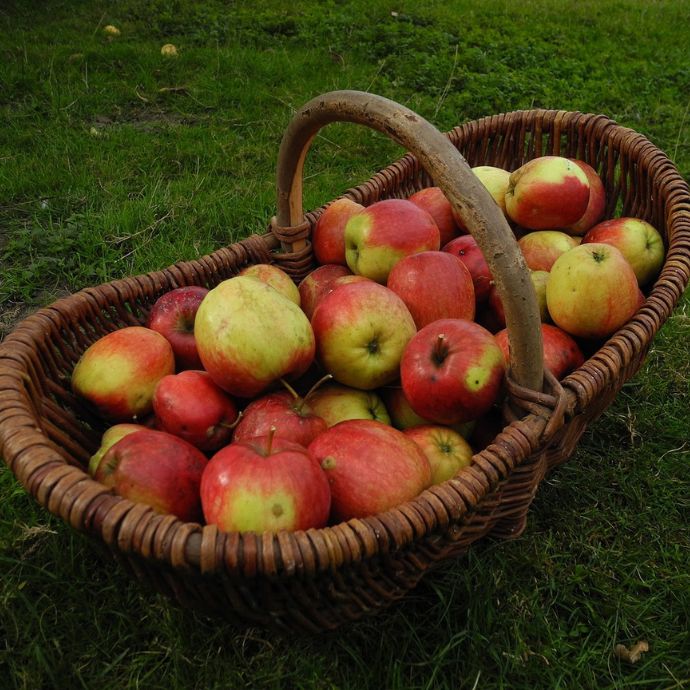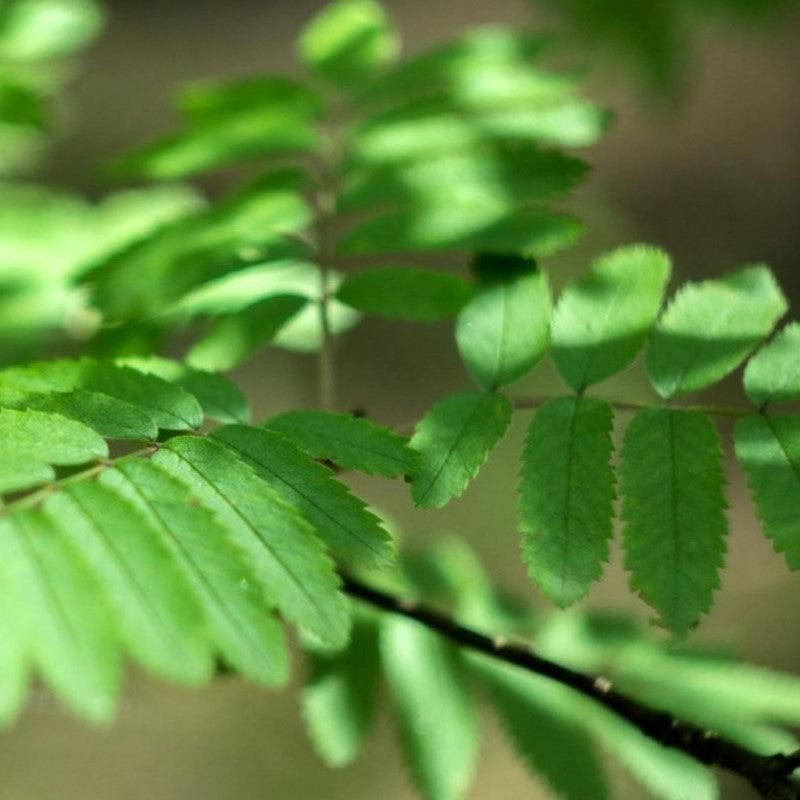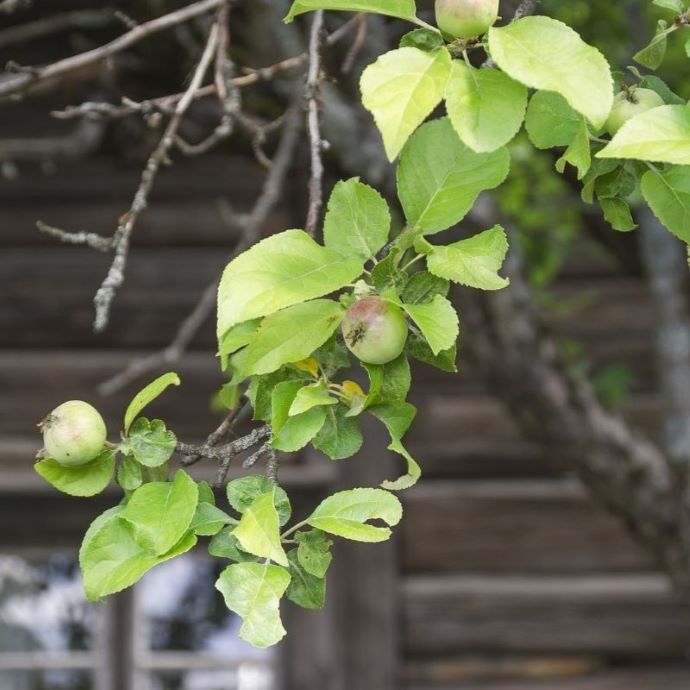Advice & Inspiration
Top 10 Most Common Trees in the UK

Nerding out about my favourite British trees? It’s a hard job but someone’s gotta do it! There’s no denying we love our gardening here in the UK, but amidst the show and sparkle of dahlias, wisteria and roses, it’s easy to take the plain, common or garden trees we see every day for granted.
We thought it was time to show our native species some love, and put the ten most common trees in the UK (in no particular order) in the spotlight for once. After all, they produce the oxygen that we breathe, absorb carbon from the air, provide homes for wildlife and even improve our mental health (don’t believe me? Try hugging one) so I reckon we owe them one!
Read on for your guide to the most common types of trees in the UK.
Jump to:
1. Hawthorn
Crataegus laevigata, Crataegus monogyna
Where can you find it?
Keen hawthorn spotters (that’s a thing, right?) should head for woodlands or hedgerows. These are not fussy trees in terms of soil and light, but they’ll flower much better in a sunny position.
What does it look like?
It’s easy to spot hawthorns in spring, as they’re one of the best flowering trees around, with clusters of strongly scented white or pink flowers. As the name suggests, their densely growing branches are covered in thorns, and they produce red fruits called haws in autumn. A hawthorn tree can grow up to 15m tall if they’re not pruned, with grey-brown bark that develops fissures as it matures.
Wildlife appeal
Native trees are the best for wildlife and hawthorns are no exception. They support hundreds of species, providing food for moth caterpillars (the leaves), dormice (flowers) and birds including fieldfares, thrushes and redwings (the haws).
Those prickly branches make the perfect spot for birds to nest safely protected from predators, and the fantastic flower clusters are naturally high in nectar and pollen, so you’ll also see plenty of bees, butterflies and hoverflies.
Tree tea
Hawthorn is also called the May tree, so when we say “cast ne’er a clout until May be out”, we’re not talking about the end of the month, but about hawthorn flowers blooming. Probably still too soon to leave your coat at home, unless you’re from Newcastle.
Hawthorn trees are a pagan fertility symbol, with their leaves and flowers traditionally used as May Day garlands (see The Wicker Man). Choose the perfect hawthorn tree for your May Day rituals with our growers’ guide to the best and brightest.

2. Beech
Fagus sylvatica, Fagus purpurea
Where can you find it?
Beech trees are usually found growing wild in the South East of England or Wales. They can be seen in woodlands or as single trees, usually in chalk, loam or limestone soil, and are also popular as hedging.
What does it look like?
A beech tree can grow to over 40m high, with a densely growing, domed crown and smooth greyish bark which takes on horizontal markings as the tree matures.
Young beech leaves are oval with a point at the end, emerging lime green and hairy at the edges and maturing to dark green.
Around April and May you’ll see catkins and flowers growing on the same tree, followed by prickly seed cases containing beech nuts.
Wildlife appeal
Beech trees can live for centuries, so as you’d expect, they’re home to a lot of other species. Old wood makes the perfect place for wood boring insects, hole nesting birds and a whole world of moss, lichen and fungi including truffles and bearded tooth fungus.
The leaves and seeds of beech trees provide food for moth caterpillars, squirrels and small mammals, while the dense branches are the perfect habitat for butterflies and birds. You might also be lucky enough to spot the odd orchid growing in beech woods.
Tree tea
The UK’s tallest tree is a 45m high beech - you can find it in Hagg Wood, Derbyshire.

3. Silver Birch
Betula pendula
Where can you find it?
Silver birches are a common sight in UK woodlands, as well as being a popular garden tree. You’ll usually see them growing in small groups or groves. In Scotland particularly, you’ll find them growing alongside their close relatives, downy birches.
What does it look like?
Silver birch is one of the most recognisable trees, with its tall, slender trunk (up to 30m high) and silvery white bark. The leaves are small and light green, turning yellow in autumn, with the addition of catkins and flowers in spring. At night the shimmering bark of birch trees seems to light up the darkness.
Wildlife appeal
With their light, airy canopies, birch trees let plenty of dappled light through to the forest floor, allowing plants like bluebells, violets, grasses and moss to thrive. They’re also a habitat for lots of different fungi, including fly agaric, chanterelle and birch specific species like birch polypore, birch brittlegill and birch milk cap.
Birch trees provide food for birds including greenfinches, siskins and redpolls (seeds) and moth caterpillars (leaves), as well as the ideal nesting place for woodpeckers.
Tree tea
Birch is an old Celtic symbol of renewal and fertility, with the twigs being used for everything from driving out the spirits of the old year to herding infertile cows to help them calve.
Brighten up your garden, drive out evil spirits or whatever with our growers’ guide to the best birch trees.

4. Elder
Sambucus nigra
Where can you find it?
Elder trees and shrubs grow prolifically throughout the UK, in woodlands, gardens and hedgerows. If you see them growing in the wild it’s likely there’s a rabbit warren or badger sett nearby, as these trees are often spread via animal droppings.
What does it look like?
Elder trees are easy to recognise in spring, by their large, flat clusters of white flowers, or in summer by their small purple-black berries.
The tree itself has a greyish brown trunk (growing to a maximum of 15m) and sparse branches. The leaves can be identified by their 5-7 pairs of toothed leaflets.
Wildlife appeal
Insects love nectar rich elderflowers (so shake them after harvesting) and birds, dormice and voles feel equally strongly about the berries. Elder foliage also provides a feast for many moth caterpillars.
Tree tea
More like tree booze - you can make a very tasty elderflower champagne or elderberry wine (but don’t eat the berries raw, as they’re poisonous). Elderflowers can also be made into a cordial (to add to fizzy water) or dipped in batter and fried. Make sure you leave some to turn into berries, though!
In folklore, elder seems to have a complicated relationship with the devil: if you burn the wood he appears, but if you plant one by your house he’ll keep his distance.

5. Hazel
Corylus avellana
Where can you find it?
Wild hazels can be found growing alongside oak, ash and birch trees in woodlands, or in hedgerows. Cultivated versions are also very popular in parks and gardens, where you might see it coppiced.
What does it look like?
Hazel trees that are left uncoppiced can grow to 12m, whereas coppiced hazel is cut down each year and regrown. They have bendy, hairy stems growing from a smooth, grey brown trunk and soft leaves with a fluffy underside that turn yellow in autumn.
It’s easy to spot hazel trees in winter, as that’s when the nuts appear in their leafy husks, or in autumn when the yellow catkins and tiny flowers are out.
Wildlife appeal
If you want to spot a dormouse, look for a hazel tree. These cute, fluffy rodents (that are not actually mice) are sometimes known as hazel dormice due to their love of the nuts, as well as the tasty caterpillars that hazel leaves attract.
Hazelnuts are also a favourite food of many other small mammals, as well as birds including woodpeckers, tits, wood pigeons, jays and nuthatches.
The trunks of mature hazels are a habitat for lichens, liverworts, mosses and fungi, while coppiced hazel tends to be rich in wildflowers, which attract butterflies.
Tree tea
Hazel twigs were thought to protect against evil spirits, and were traditionally used for water divining - these days they’re more likely to be used by thrifty gardeners as supports for peas and beans.
Hazel trees used to be widely grown commercially in the UK, but the majority of the hazelnuts we eat are now imported. Unless, of course, you grow your own!

6. English Oak
Quercus robur
Where can you find it?
Oak trees are a common sight in British woodlands, especially in central and southern areas (and in landscape photography). You’ll also see oak in hedgerows and in parks.
What does it look like?
Oaks have thick, ridged, sturdy trunks when they’re mature, and can grow up to 40m high. The crown is broadly spreading with very recognisable round-lobed leaves that grow in bunches.
Yellow catkins appear in spring, followed by distinctive acorns. These start off green before turning brown and falling to the ground.
Wildlife appeal
An oak tree supports more wildlife than any other native tree, including hundreds of insect species. Caterpillars love to eat the leaves, birds come for the insects and the acorns are a favourite of squirrels, badgers, deer and other mammals.
If you’re lucky, you might see bats roosting in the trunk, or a woodpecker drilling away at a branch. There’s also a whole host of fungi lurking in the leaf mould at the base of the tree, including oakbug milkcaps.
Tree tea
The Major Oak, an ancient tree in Sherwood Forest, is said to have been the hiding place of legendary local outlaw Robin Hood. Further back in history, druids centred their rituals around the sacred oak and the mistletoe that grows on it.

7. Holly
Ilex aquifolium
Where can you find it?
Holly trees and shrubs can be found in woodland everywhere throughout the UK, as well as in hedgerows and gardens. It often grows alongside oaks and beeches.
What does it look like?
Holly is instantly recognisable by its glossy dark green, spiky leaves and red berries. It’s an evergreen, so the leaves can be seen all year round, and in spring they’re joined by white flowers. The tree’s trunk and branches are smooth, slender and dark brown. In the wild, hollies can grow up to 15m high and live for centuries.
Wildlife appeal
Spiky, densely growing holly trees make a perfect nesting place for birds to escape from predators, with plenty of caterpillars for them to eat, and berries providing an essential winter food source for them, as well as for wood mice and dormice.
Down at the base of the tree, the leaf litter provides hedgehogs with a good hibernation spot. Spring flowers are nectar and pollen rich, attracting bees, and butterflies including the Holly Blue.
Tree tea
Decorating our homes with holly at Christmas has its roots in pagan mythology - holly was traditionally thought to protect against the devil and it was considered bad luck to cut a holly tree down.

8. Rowan
Sorbus
Where can you find it?
You’ll find most rowan trees in colder areas of the UK, especially in Scotland, and at high altitudes (which is why, despite not being an ash tree, it’s also known as the Mountain Ash).
It’s also a popular garden tree or street tree, as it absorbs pollution.
What does it look like?
Rowan trees can be recognised by their colourful berries, which appear in autumn and stay all winter (unless the birds strip them). These are most often red but can be yellow, orange, pink or purple too.
Before these develop, you’ll see clusters of white flowers among the distinctive leaves, which are divided into 5-8 pairs of leaflets. Rowan branches start off hairy and become smooth as they mature, and the bark is silvery grey.
In the wild, rowan trees can live for up to 200 years and grow to 15m tall. Rowans are attractive trees in every season - you can find out more in our rowan tree feature.
Wildlife appeal
Rowan trees are a bit of a wildlife magnet! Their flowers attract pollinating insects in spring, while the leaves are loved by caterpillars. Get ready for the flocks of visitors in autumn and winter, though, as the berries are like bird crack.
They’ll attract blackbirds, mistle thrushes, fieldfares, waxwings, redstarts and a host of others. They’re also edible by humans if they’re cooked, and make a pretty decent jelly or jam.
Tree tea
Rowan was traditionally planted near houses to ward off witches and other baddies. You’ll find them planted in old churchyards for this reason. Want one in your garden? Our growers’ guide will help you choose.

9. Alder
Alnus glutinosa
Where to find them
Alder trees like to live in damp, cool places like wet woodlands, near streams and in marshland. It will also grow in drier areas though, such as mixed woodland, and will tolerate poor soils where little else grows.
What does it look like?
Alder trees tend to grow in a conical shape, with dark, fissured bark and light brown, spotted twigs which are sticky when young and sometimes have orange lenticels (horizontal lines) in winter. Alder leaves are small, dark green and leathery, with serrated edges and you’ll also see yellow (male) and green (female) catkins in spring. The latter turn into small, woody cones once they’re pollinated, split to release their seeds then remain on the tree all year round.
Wildlife appeal
Like many of the trees in this list, alder leaves provide food for caterpillars and the tree has a specific species in the Alder Kitten moth. Alder catkins are attractive to bees and its seeds are loved by birds including goldfinches, redpolls and siskins.
Watch out also for mosses, lichens and fungi at the base of the tree, and if there’s a mature alder growing in a riverside spot near you, you could be lucky enough to spot an otter’s nest amongst the roots!
Tree tea
Since alder wood doesn’t rot in water, it’s been used for centuries to make boats - and a large chunk of the city of Venice is actually built on foundations of alder.

10. Willow
Salix
Where can you find it?
Willows are most often found on riverbanks, alongside streams and in the works of Kenneth Grahame. Smaller varieties are very popular as garden trees, including the Flamingo Willow and the Kilmarnock Willow, and willow can also be grown in a hedgerow.
What does it look like?
There are many different types of willow, with different sizes and forms. The classic weeping willows that you’ll see growing on riverbanks can grow up to 25m tall with branches that naturally bend and sweep the ground.
Their stems and twigs tend to be flexible, with white willows having grey brown bark and golden weeping willows having striking yellow stems. Goat or pussy willows are recognisable by their fluffy catkins that appear before the leaves.
Wildlife appeal
Willow catkins are an important pollen and nectar source for early pollinators, including bees, butterflies and hoverflies, while the caterpillars of many moth species feed on the leaves. Birds nest in the branches and eat the insects that live there.
Tree tea
Willows are associated with sadness - Shakespeare’s Desdemona sings about a willow tree before she dies and Ophelia drowns near one.
This wasn’t always the case, as willows were a symbol of renewal and vitality further back in time - did you know that you can make a new willow tree just by pushing a cutting into the ground? It doesn’t even have to be the right way up!
Want to add some willowy goodness to your garden? Our growers’ guide will help you choose.
You can go down a tree wormhole find more inspiration with our fine selection of tree articles and let our growers help you choose the perfect tree for your garden.



















